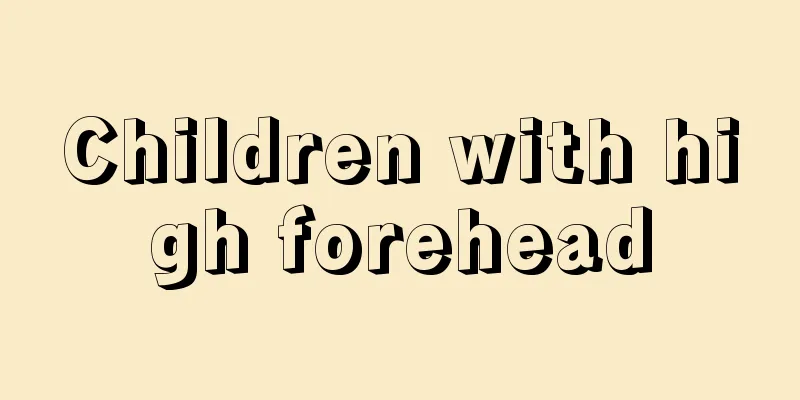Children with high forehead

|
After the baby is born, the mother will take special care of the baby. Every change of the baby will attract the mother's attention and joy. Watching the baby grow little by little and recording every bit of the baby's growth is the happiest thing for the mother. During the baby's growth process, there will be some phenomena that may confuse the mother. Some babies have higher foreheads, which the mother will pay special attention to. Children with high forehead In fact, most of a baby's appearance and facial features are inherited from his parents. Family genetic characteristics are sometimes more obvious and can be passed down from generation to generation. Therefore, the height of the baby's forehead is also related to genetics. Therefore, it is normal for the baby to have a higher forehead. It is mostly due to genetic factors, not caused by pathological diseases. There is also a saying that the baby's forehead is high due to calcium deficiency, but this is not necessarily the case. If you are really worried, it is recommended to take your baby to a local regular public hospital for a trace element test to see if it is calcium deficiency, rather than just listening to the doctor's words. What to do if the baby has a high forehead A high forehead is normal and is mainly related to genetics, so parents don't need to worry too much. Of course, if you find that you, your parents, and your relatives all have low foreheads, but your baby's forehead is relatively high, this may be abnormal. It is recommended that you get a check-up to see if it is due to a lack of nutrients or other reasons. However, human development is inherently magical. Even if everyone in the family has a low forehead, the baby's forehead may be relatively high. The skull of babies aged 3-6 months is soft. If you press the middle of the occipital bone or parietal bone with your fingers, the skull will collapse due to the pressure. However, as your fingers relax, the skull will bounce back like a ping-pong ball. When the baby is 8 or 9 months old, excessive bone-like tissue accumulates under the periosteum of the frontal bones and parietal bones on both sides, forming a square head. At this time, you will find that the baby's forehead has become higher, but in fact it has just become stronger. |
>>: How many days should I stop breastfeeding for neonatal jaundice?
Recommend
What are the typical symptoms of acute nephritis in children?
Acute nephritis in children is a very common dise...
What is the shape of a three-month-old baby's stool?
Nowadays, mothers are getting younger and younger...
What should not be eaten for precocious puberty
Not all foods are suitable for children to eat. P...
What subject is not allowed for children to pass in pronunciation?
The child is too young, and the various organs of...
Six or seven month old baby has diarrhea
Every change in the baby after birth is watched b...
Is baby's stiffening while feeding a symptom of cerebral palsy?
When a young mother is breastfeeding her baby, if...
Can infants and young children with roseola take a bath?
Most infants and young children will develop rose...
The baby only has two teeth at ten months old
Newborns have no teeth when they are just born. W...
What to do if a child has a dry and bleeding nose
In life, children are the apple of their parents’...
What causes bed-wetting?
Under normal circumstances, adults rarely have sy...
How many days does it take for a child to recover from influenza A?
Influenza A is a very strong type of influenza. I...
If I sleep with my head tilted, will it still be tilted when I grow up?
Sleeping with a tilted head is a colloquial term ...
What should I do if my baby is born with amblyopia?
What should I do if my baby is born with amblyopi...
What is the cause of small pimples on the newborn's face?
What I want to tell you today is what causes smal...
Why does the child's face turn pale?
Under normal circumstances, children's faces ...









